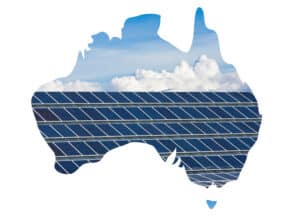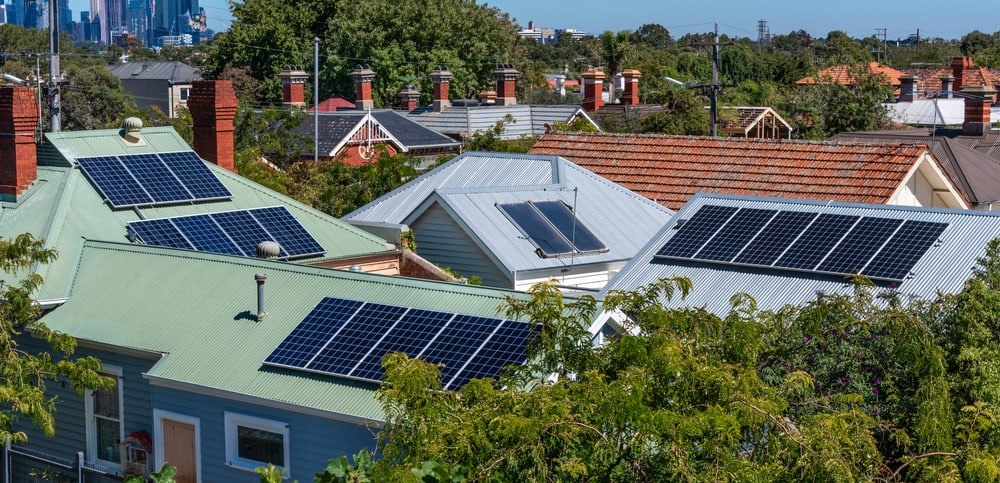Renewable Energy in Australia – Legal Issues You Need to Consider
There are several different types of renewable energy in Australia. Some of these resources include geothermal energy, wave energy, solar thermal energy, and wind power. This article will cover the sources of renewable energy in Australia and the investment that has been made in these resources over the last five years.
It will also address the legal challenges involved in developing renewable energy projects in Australia. We'll end with a look at the future of renewable energy in Australia.
What is Renewable Energy in Australia?
Renewable Energy in Australia refers to the production of energy using renewable sources that naturally replenish over time. Unlike fossil fuels, such as coal, oil, and natural gas, renewable energy sources cannot be depleted and are usually more environmentally friendly. In Australia, renewable energy comes from various sources, including:
- Solar Energy: Australia's abundant sunshine makes it an ideal location for solar energy production. Solar panels are used to convert sunlight directly into electricity, both on small residential scales and in large solar farms.
- Wind Energy: Wind farms, consisting of multiple wind turbines, are used to harness the power of the wind to generate electricity. Australia has several wind farms in operation across different states.
- Hydroelectric Energy: Utilizing the force of flowing or falling water, hydroelectric power is a significant part of Australia's renewable energy mix. The Snowy Mountains Scheme is one of the most famous hydroelectric projects in the country.
- Biomass: Organic material such as agricultural waste, wood, and specific crops can be used to generate energy. Biomass can be burned directly or converted into biofuels such as ethanol or biodiesel.
- Geothermal Energy: This involves harnessing heat from the Earth's interior. Australia has geothermal energy potential, although it's less developed compared to other renewable sources.
- Ocean Energy: Technologies to harness energy from the ocean's waves and tides are being explored and developed in Australia.
- Energy Storage: Complementary to renewable energy generation, energy storage solutions like batteries allow for the efficient utilization of renewable energy even when the sun doesn't shine or the wind doesn't blow.

The Benefits of Renewable Energy in Australia
Certainly! Renewable energy has become a cornerstone of Australia's energy landscape, offering a plethora of advantages. Here are seven key benefits of renewable energy investment in australia:
Environmental Conservation
Renewable energy sources like solar, wind, and hydro produce little to no greenhouse gas emissions, making them a cleaner alternative to fossil fuels. This helps Australia reduce its carbon footprint and combat the effects of climate change.
Economic Opportunities
The renewable energy sector has created thousands of jobs across Australia. From research and development to installation and maintenance, this industry has become a significant contributor to the national economy. Investments in renewable energy also stimulate local economies and support small businesses.
Energy Independence
By investing in local renewable energy sources, Australia can reduce its dependence on imported fuels. This not only strengthens the country's energy security but also ensures stable energy prices by minimizing the impact of international fuel market fluctuations.
Diverse Energy Portfolio
Australia boasts a variety of renewable resources, including solar, wind, tidal, geothermal, and biomass. Harnessing these multiple energy sources diversifies the energy portfolio, reducing reliance on a single source and ensuring a consistent energy supply even if one source is temporarily unavailable.
Decreasing Costs
The cost of producing renewable energy, especially solar and wind, has been consistently decreasing over the years. This trend is expected to continue, making renewable energy even more affordable for both households and businesses in the future.
Scalability and Flexibility:
Renewable energy systems can be designed to meet specific energy demands. Whether it's a small-scale solar installation on a suburban home or a large wind farm in rural areas, renewable energy projects can be tailored to specific needs, providing flexibility and scalability.
Enhanced Grid Reliability
Distributed renewable energy generation, such as household solar panels, reduces the load on the central grid. By distributing the generation of electricity, the strain on any single point of the infrastructure is minimized, leading to fewer blackouts and better overall grid reliability.
Sources of renewable energy in Australia
In Australia, wind energy is the largest source of renewable energy, producing enough electricity to meet 7.1 percent of the country's total demand.
Wind power is also one of the cheapest sources of energy in the country, with utility-scale wind farms delivering approximately 16 GW of capacity in 2018. In the coming decade, utility-scale wind power is expected to reach costs of $50-65 per MWh, with new wind farms reaching this level by 2030.
The country's large renewable resource base is spread out across the country. Hydroelectricity resources are largely developed and wind energy is a rapidly growing industry. While Australia has a rich hydropower and wind resource base, its current utilization is limited by higher transformation costs, immature technologies, and long distances from markets.
In addition, Australia has significant geothermal resources, but these have not been quantified and are primarily considered “hot sedimentary aquifer”-type resources.
Hydroelectricity is another source of renewable energy in Australia. It uses the power of water passing through a dam or reservoir to drive turbine blades that generate electricity. Australia uses areas with heavy rainfall, which makes hydroelectricity a viable option for generating electricity. It also cuts down on greenhouse gas emissions.
Renewable electricity is the most environmentally friendly source of power. The Australian Government has set up programs to promote its use of renewable energy.
Solar and wind power are two different types of renewable energy. Solar panels can be used to pre-cool or pre-heat the house. Reverse-cycle air-conditioners can be programmed to switch on before the occupants return home.
All of these sources require qualified professionals and installers. Clean energy council offers a directory of accredited designers and installers. They can design and install the system for you. You can also install your own solar panels and wind power.
Investment in renewable energy generation in Australia has grown significantly in the past five years, contributing to the country's shift away from fossil fuels. However, current estimates suggest that investment has peaked and is likely to decline further in the coming year.
Renewable energy generation is also expected to continue to contribute to Australia's energy mix over the long term. Australia's current electricity generation capacity will likely be replaced by large-scale renewable energy generators and distributed energy resources supported by energy storage.
Investment in renewable energy in Australia over the past five years
The rise in investment in renewable energy in Australia has been largely driven by government policy. While some companies invest in emerging technologies, the vast majority of investors are more hesitant to back projects involving unlisted companies.
There are several risks associated with energy production, including increased risk factors, delayed grid connection, and the Morrison government's unwillingness to meet climate targets. Investors must also consider the impact of proposed reforms at the Energy Security Board, including the implementation of a capacity market that will support ageing coal power plants.
Australian government is also investing in the next generation of renewable technologies. Last year, the Australian Government allocated AU$1.6 billion to renewable energy regulation. It is estimated that 17 windfarms reached financial close.
Despite the lack of a formal net-zero target, 90 cents of every dollar invested in renewable energy in Australia is directed towards solar and wind power. Investment in renewable energy is overseen by the Australian Energy Market Operator (AEMO).
In the last decade, the Australian renewable industry has expanded dramatically. Wind and solar generation accounted for 16% and 27% of total electricity generation in Australia by 2020, respectively. Hydropower generation has remained consistent but is slowly fading as more renewable sources replace conventional sources.
Moreover, large-scale solar generation is growing rapidly. Eventually, it will account for almost a quarter of the nation's electricity supply by 2020.
While direct investment in renewable projects is low-risk, it is also not without its risks. In Australia, large-scale solar projects are unlikely to go wrong, but retail investors have traditionally preferred to invest in corporate bonds.
MidAmerican Renewable Energy Company, for example, recently issued $1 billion in bonds at a 5.375% interest rate. Despite this low interest rate, however, bond investing is still a risky business.
While the level of financial commitments to large-scale renewable energy projects has decreased significantly in the last five years, the number of projects will increase by nearly one-third by 2021.
During this time, 26 large-scale renewable energy projects will be completed, adding more than 2.8 gigawatt-hours to Australia's grid. As battery costs continue to fall, Australia's investment in renewable energy is expected to grow exponentially.

The future potential of renewable energy in Australia
With government funds to offset the costs of installing new renewable energy sources, the cost of electricity will be less than $30 a megawatt hour by 2030. That price will undercut most existing gas stations and compete with gas for industrial heating.
Renewable electricity production will also be easier to balance with existing technology. To reach that price, renewable electricity needs to be delivered into cities via a stronger high voltage transmission network. By 2030, most of Australia's energy demands will be met by renewable energy sources.
In the last year alone, Australia added over 2,200 megawatts of renewable energy capacity. By 2035, the country could add another 10,400 megawatts of renewable energy capacity.
Of this, 7,200MW will be large-scale solar photovoltaics and 3,200MW from rooftop solar. Of this total, about half will be permanent jobs in operation and maintenance. It's an ambitious goal, but one that is achievable.
Despite the potential benefits of renewable energy in Australia, there are many challenges. In addition to the lack of storage capacity, solar, and wind power generation have a limited supply of energy. Without proper storage, they may not be available at the time of electricity demand.
In Australia, storage solutions have two common forms of energy storage: batteries and hydroelectricity. In the future, hydrogen storage technologies may also play an important role. As these technologies advance, we will continue to see significant investments in them.
Hydrogen is another promising renewable energy resource. Hydrogen is a versatile energy carrier, capable of reducing emissions from hard-to-abate industrial sectors. It can also be used as a co-fuel for coal power plants. However, hydrogen's cost is prohibitive.
In order to lower its cost, the hydrogen industry must be supported by robust policy. If successful, Australia could be a hub for hydrogen production.
The government is taking a number of steps to help Australia achieve its target of becoming 100% renewable. The government is supporting high-voltage interconnectors, allowing the integration of 50-100 percent renewable energy into the national grid.
Additionally, government funds for large-scale storage projects will also help renewables reach their full potential and deliver deep emissions cuts. This is an extremely exciting time for the Australian renewable energy industry.Legal challenges in developing renewable energy projects in Australia
In addition to identifying legal issues related to renewable energy and geothermal resources, proponents of these projects also have to comply with a wide range of titling requirements and legislative requirements.
These requirements can be complicated by varying state laws and can limit the scope of renewable energy projects. To ensure the success of your project, here are some of the legal issues you will need to consider. Listed below are some of the common legal challenges you may encounter.
Developing a renewable energy project in Australia involves many legal issues. These include obtaining permits, obtaining regulatory approval, identifying funding and negotiating with local governments. There are many obstacles to overcome, but a thorough understanding of the applicable laws will help you navigate these hurdles successfully.
Investing in renewable energy is a sound investment for the future of Australia, but it requires careful planning and thorough analysis of all available options.
The regulatory framework for environmental protection in Australia varies between states, but most states have adopted a similar duties-based framework modelled on occupational health and safety legislation.
Most states have also made renewable energy projects subject to a general environmental duty. This duty requires the person engaging in an activity to reduce the potential for environmental or human health impacts. In Australia, it is possible to acquire a license for renewable energy projects.
Conclusion
The landscape of renewable energy in Australia paints a picture of promise interwoven with challenges. As an individual who deeply values the health of our planet and the sustainable future of our nation, the surge in renewable energy initiatives and investments in Australia fills me with hope. The abundance of sunlight, the strength of the winds, and the force of our ocean waves offer not just energy but a chance at a cleaner and more resilient environment for future generations.
Yet, the journey isn't straightforward. The legal hurdles, the storage challenges, and the initial costs associated with these technologies remind us that transitioning to a green future requires concerted effort, strategic planning, and, more importantly, unwavering commitment.
The prospect of Australia potentially emerging as a hub for hydrogen production or achieving 100% renewable energy is exhilarating. But it's the on-ground realities – the creation of jobs, the reduction of our carbon footprint, and the preservation of our natural wonders – that make this transition personally significant.
Sources
- Australian Renewable Energy Agency: https://arena.gov.au/
- Clean Energy Council: https://www.cleanenergycouncil.org.au/
- Australian Energy Market Operator: https://www.aemo.com.au/
- Department of Industry, Science, Energy, and Resources: https://www.industry.gov.au/

